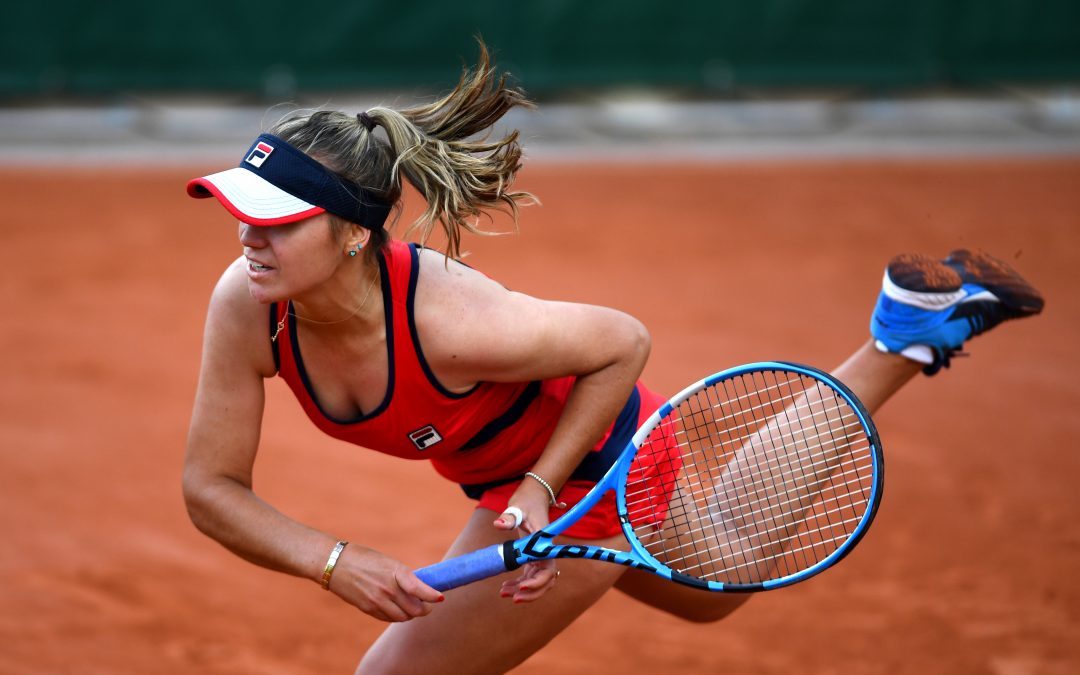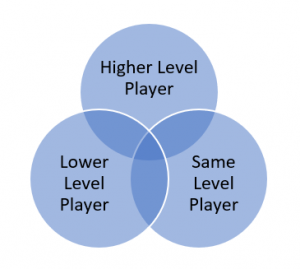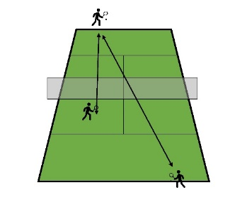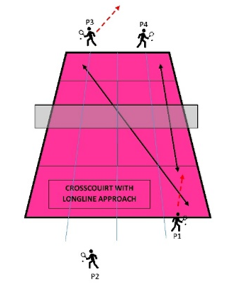At some stage during the average club coach’s career, they will come across a player or even group of players that play the game a little better than themselves.
Alongside a ‘high level’ player will hear the words “my son/daughter needs to hit with higher level players, the players they currently hit with are not cutting it”.
There are many exercises, practices, and situations we can put these ‘higher-level’ players into whilst working alongside lower level players. We will cover a few suggestions in the following areas:
- Hitting using 1 v 2 players
- Pressure situations
- Pressure match play
Whilst I will give a few examples of the above which are taken from my bestselling SYSTEM-9 Yellow Ball and Singles Tactics books, it is important to remember that to get the best from a player, improve confidence and ensure progression, they need to play against a triad of players.
Here are the problems:
- Every player (along with their respective parent) wants to hit with the better player
- The better player does not want to hit with the lower level player
Reality: High level players can hit with anyone and make it if the environment is right.
1. Hitting using 1 v 2 players
Hitting with two players on the opposite side can ensure the player gets a better workout and it is what it says purely hitting! Obviously technical, tactical, or even mental coaching can be used with a guarantee of on court fitness.
THE N DRILL
- Keep the ball out of the black area.
- With practice and regularity, it becomes second nature.
- Play without and with points, without or with serves.
- (NB. serve can land in the area)
Baseline to baseline to volley
Practice 1
Single player hits to baseline player who hits back into deuce side. Next shot is for the volleyer to hit back. Continue with Ad side after a set number of errors or set time and rotate.
Practice 2
Single player has full singles court. Baseline player hits at will, volleyer must co-operatively volley back to singles player. Singles player must alternate shots as with above.
This is a great deal for receiving two types of balls from both players.
2. Pressure Situations
Using 3-way drills is a perfect example of stressing the better players with two other players.
These are drills that can be used at all standards. These drills ensure the individual player does not always win the point outright and encourages them to work harder.
Crosscourt change of direction on short ball
- Player 1 rallies crosscourt in the deuce courts to player 3 and changes direction on any short ball to player 4
- Player 3 moves off the court for players 1 and 4 to continue the point.
- Restart from the ad side, with player 1 rallying to player 4 and changing direction to player 3
- Player 2 moves in to replicate the same play
- Players keep individual scores
- Change roles after 10-minutes noting down scores on the scorecard
SCORE PROGRESSION: If players miss the change of direction short ball shot, then deduct one point from the individual score
CROSSCOURT AND LONGLINE APPROACH
- Player 1 rallies deuce crosscourt to player 3 and approaches the net on any of the above balls, to player 4
- Player 3 moves off the court for 1 and 4 to continue the point.
- Restart from the ad side with player 1 rallying to 4 and changing direction to 3
- Player 2 moves in to replicate the same play
- Change roles after 10-minutes
- Change sides noting down scores on the scorecard
SCORE PROGRESSION: If players miss the change of direction approach shot, then deduct one point from the individual score
3. Pressure Matchplay Scenarios
If a higher-level player finds it easy to beat a lower level player then adjust the balance.
We can start to play games or sets starting at the following scores:
Condition the environment for better player:
- Use second serves only
- Server must tell the player where the serve is going
- The player must play two points twice and win both to proceed
- Returner lets the serve go and coach feeds the return in to continue play
- If the player loses on game point, the score returns to love
- At times throughout the game the coach can feed a second ball in once the point has been played for the point to continue
Conclusion
The ultimate goal of any player is to improve day to day and match to match.
Playing better players is great as there is no pressure if you lose, to lose to a lower ranked player for some is the end of the world (which may explain why many don’t want to risk losing face).
To play someone weaker means a player can work on aspects of their game in a slower paced setting allowing the thinking process to take place.
Playing someone of the same standard pushes each other to grow, sometimes you win sometimes you lose but its okay we are the same standard.
Playing someone stronger helps to see where you still need to be and what needs to be accomplished.
At one of my earlier clubs whereby I became club singles champion 5 times, players could regularly be seen beating me in ‘practice matches’. But when it came to nearer the main event, I would play more even more practice matches. Competition was a whole new ball game; my last win had my opponent full of confidence having beaten me in previous singles practice matches. The eventual score 6-0 6-2 and another win chalked to me before my demise to the up and coming juniors I had been coaching.
Enjoy your practice!
.







